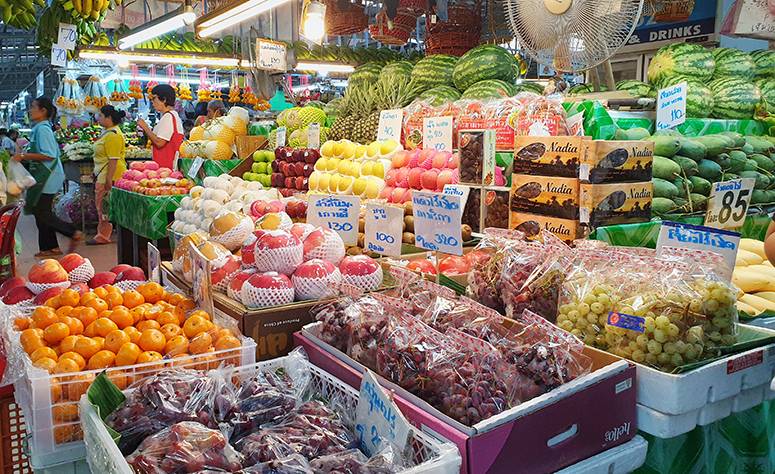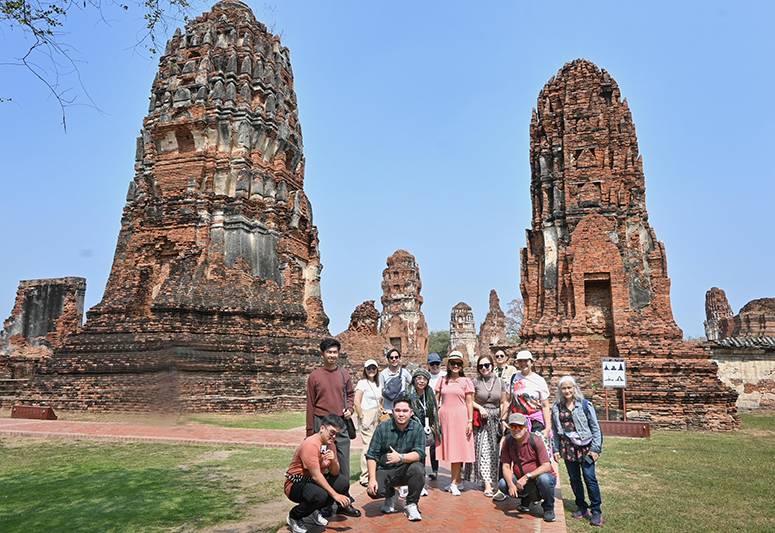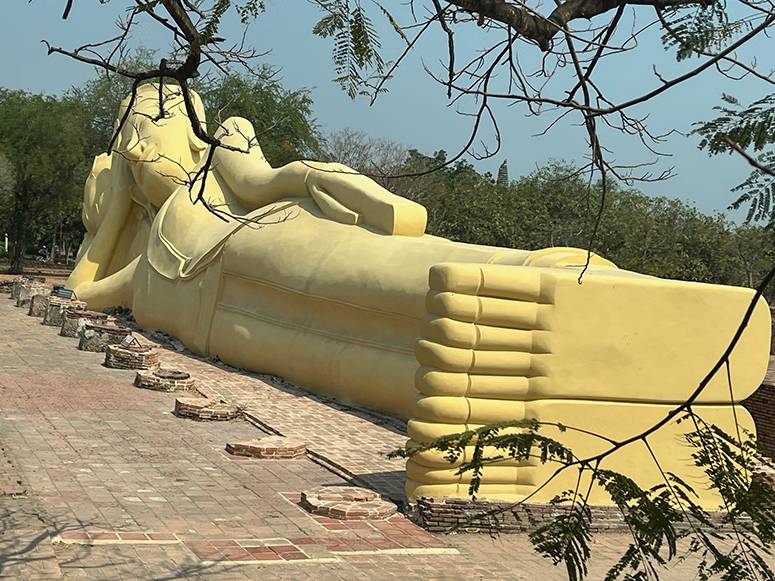Agriculture journalists sample the wares in Bangkok
Our best agriculture journalists couldn’t have been sent to a more propitious bonus-prize destination than Bangkok, where evidence of continuing science-based governance remains commendable. This ranges from airport and transport handling to quality of accommodations, recreational facilities, food availability and presentation, and not least of all, the city-wide presence of outstanding agricultural products.
Over the past decade or so, previous trips to Bangkok had me remarking positively on the varied fruits on display on sidewalks and in night markets. It seemed Thailand was in a race with Taiwan for the production of larger and sweeter fruits such as we now call giant atis—which we now wait for at Farmers’ Market in Cubao for seasonal importation, at high prizes. The same is true of their sweeter lanzones or longkong, guavas, mangosteen et al.
Sadly, we recall the days when earlier generations of foreign agriculture students spent years at IRRI and UP Los Baños, which led to the popularity of Thai Jasmine rice and rice production that involved exportation. This could only mean no-nonsense application of scientific methods—in stark contrast to our woefully embarrassing reputation as the highest rice-importing country in the world, thanks to our own generations of decrepit government officials.
What we’ve had are rice distribution cartels, onion and garlic smuggling, seasonal oversupply of tomatoes, cabbage and cauliflowers in the north. Till now, provincial leaders and national officials haven’t come up with a program for canning tomato juice or puree, or cabbage into kimchi.

In past visits, I had noted how Thai fruit products and other edibles like sweetened tamarind were packaged so neatly, even elegantly. The sense of design also showed no negligence on the part of government’s trade and merch bosses. Here it has to take inspired efforts by some of our manufacturers to come up with admirable design presentations, as has recently happened with our cacao, coffee and chocolate products, especially those from the south.
In Bangkok, I also noted similar care for presentation and packaging when it came to ripe mangoes. They were all of the same size, shape, and spotless skin—with the occasional exception of the mangoes cut up to partner popularly with sticky rice for dessert. But Thai farmers had yet to produce exceptionally sweet mangoes such as our Golden Carabao variety grown in Zambales and Guimaras Island. I wondered then how long it would take Thailand’s mango growers to replicate our best.
Well, on this last visit I had my answer. The uniformly sized and shaped mangoes in Bangkok have risen several notches more in terms of fleshy succulence. Perhaps in a few more years they can start rivaling our Golden Carabao.
These observations I shared with some of the young writers who had won in the latest edition of the Brightleaf Agriculture Journalism Awards organized by PMFTC, Inc.. Seven of the top ten winners joined the trip to Bangkok: Kara Patria Constantino David-Cancio, who won for Agri Story of the Year; Jose Revoli Cortez for Agri Photo of the Year; Richel Umel, Agri Feature Story-National; Marilou Guieb, News Story-National; Earl Kim Padronia, News Story-Regional; Ian Carlos Simbulan, TV Program; and Joshua Mendoza, Online Story.
The 17th Brightleaf Awards winners who couldn’t join us were Ian Ocampo Flora for Feature Story-Regional, Zhander Cayabyab for Radio Segment, and Jonathan Sulit for Tobacco Photo of the Year.

Joining in were contest judges Tin Bersamina, Corrie Narisma, J. Albert Gamboa and this writer as chair of the board of judges. Representing PMFTC, Inc. were Cor Renes, Seano Obmerga, Maru Lim Chuayap, and Didet Danguilan, with Inna Plijter as our tour supervisor.
We stayed at Amari Bangkok, which was centrally located, right across from Platinum Fashion Mall and surrounding shopping centers, with pop-up market stalls open till late evening. Upon check-in, the group hurried to catch the Chao Phraya river dinner cruise past the Grand Palace and Wat Arun. As the super senior, I begged off from this traditional treat, content to stay in the hotel for needed rest. I joined the next day’s bus tour to Ayutthaya Historical Park, which included a stop at the newly opened The Arts of the Kingdom Museum. On the way back, we stopped at an elephant feeding attraction. Tour stops the next day included the Maekhong Railway Market and the Damnoen Saduak Floating Market. But what I made sure to join were the lunch and dinner treats at Michelin Guide-rated local restos, where the large-headed river shrimps, similar to our ulang, seemed to be the seasonal star attraction.

The Amari Hotel had many Filipino employees, including the F&B manager, who made sure to make our breakfast gigs memorable. With him and our travel specialist, I wound up rationalizing as to why our tourism managers should stop envying Thailand’s record numbers of tourist arrivals. This has always been an accepted fact of life, in my view, for simple reasons.
The first is that Thailand enjoys geographic blessing as a hub in Southeast Asia. It costs so much less to fly to Bangkok from Europe. You reach Bangkok, and you can travel by land to Vietnam, Malaysia, Singapore, and Indonesia. That’s the advantage of being a hub—unlike Manila which can only be a dead end from the West going East.
Even the earliest Aussie tourists who initially brought up the arrival numbers didn’t mind the longer flights for Pattaya and Patpong. Well, because they’re Pattaya and Patpong, with their sunny beaches, thriving nightlife with bar girls and lady boys, plus the environment of permissiveness.
Thai temples are also more quaint than Catholic churches. A kingdom is also more exotic. Our pluses remain our facility with English and our terrific islands for all sorts of water sports. Oh, and of course the Pinoy’s sociability and perpetual smile.
But now that private sale and use of marijuana has been declared legal in Thailand, well, that’s a lot of smiles, foolish grins, snickers and guffaws to add to the Thai treat. Which I just had to savor in some way, as it would be a first for me in Bangkok. Let me repeat: “in some way,” which meant looking for what’s officially called a dispensary, some of which also allow actual tasting in their premises. I managed to take some pics of the array of jars on a counter offering various varieties. I tell you: permissive agriculture is yet another special treat, one night or two or three in vibrant, liberal Bangkok.


